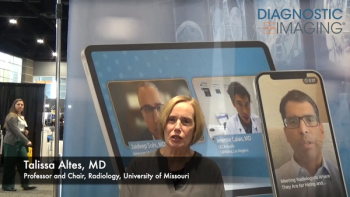
Hybrid systems challenge best-of-breed information technology
The radiology community may soon witness the death of best-of-breed IT solutions. Until recently, companies expert at a specific kind of information handling, such as RIS and orthopedic PACS, have been able to win converts. But that is changing as large IT companies expand to create enterprise-wide systems, building interfaces to work with legacy products, as they set their sights on developing comprehensive systems that will one day push aside their specialized competitors.
The radiology community may soon witness the death of best-of-breed IT solutions. Until recently, companies expert at a specific kind of information handling, such as RIS and orthopedic PACS, have been able to win converts. But that is changing as large IT companies expand to create enterprise-wide systems, building interfaces to work with legacy products, as they set their sights on developing comprehensive systems that will one day push aside their specialized competitors.
Whether this happens - or how soon it happens - could come down to how vendors define their customers.
Historically, purchasing has been done at the departmental level rather than the hospital level, with vendors approaching the chief of radiology or department administrator instead of a hospital executive. Recognition that productivity requires an integrated approach to IT solutions, however, has brought this model into question.
"Beefing up the IT department and looking for platform-based solutions is moving the decision up a level," said Kevin Hobert, president of Carestream Health. "The catch is that you still have to meet the needs of the department."
This has led the newly constituted Carestream, which completed its corporate secession from Kodak on May 1 (DI SCAN, 4/2/07,
The path to such technological consolidation already has been foretold and conveniently displayed at the last several RSNA meetings. One such example: the hybridization of RIS and PACS.
"These used to be purchased separately as customers went for the best-of-breed in each," Hobert said. "We treated them as two different things. Now you are seeing more and more integrated RIS/PACS. We're finding that when customers buy our PACS, they are likely to replace their existing RIS with ours as well."
The need for productivity is driving both the adoption of IT systems by departments and the integration of those departments. As demand spreads outside radiology, companies providing IT solutions build products that can communicate with each other. This leads to electronic systems that cover more and more medical territory.
Carestream is in an exceptionally good position to capitalize on this cycle, according to Hobert, noting that the company's bread-and-butter film and laser image business has for decades depended on its ability to interface with other vendors' devices.
"We have more DICOM connections out there than any company in the world," he said. "In the meantime, we have built a great RIS/PACS - and we can take that up a level in the hospital. You can have a great departmental solution, but if you don't have a strong electronic patient record, there is another opportunity you have left on the table."
Newsletter
Stay at the forefront of radiology with the Diagnostic Imaging newsletter, delivering the latest news, clinical insights, and imaging advancements for today’s radiologists.




























